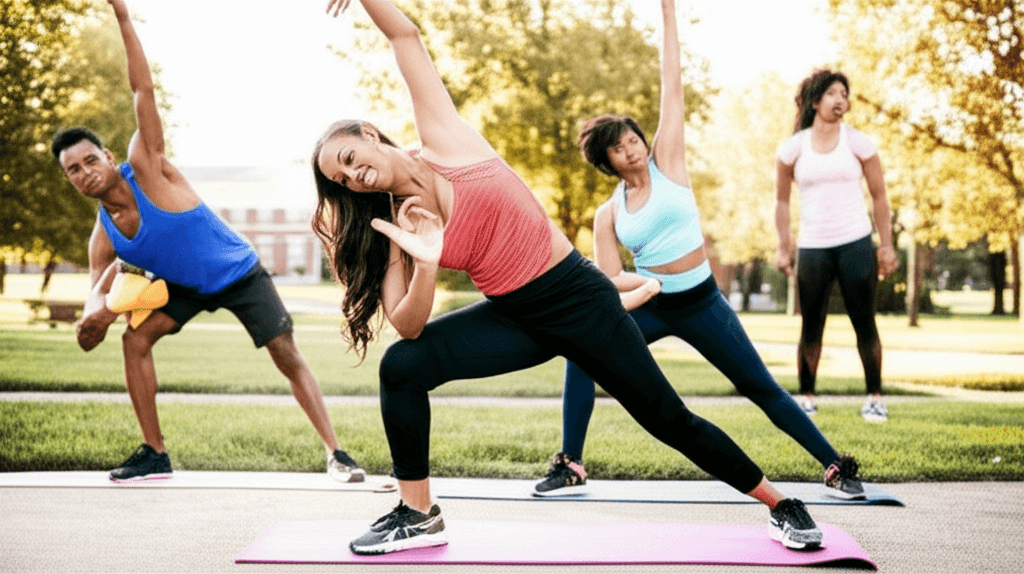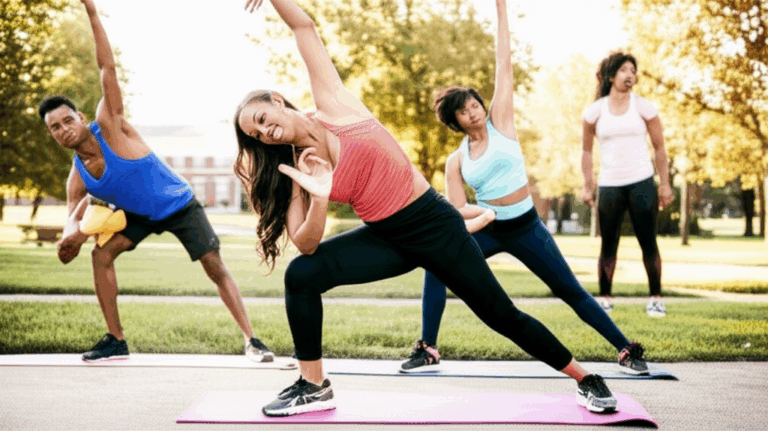As summer winds down and the familiar rhythm of the back-to-school season kicks in, many people find themselves adjusting to new schedules and routines. This period of change, often associated with academic and extracurricular demands, surprisingly offers a prime opportunity to establish a new, healthy workout routine. The structured nature of the “back-to-school” mindset can be a powerful catalyst for building consistent fitness habits that extend beyond the classroom.

Why Back-To-School is a Great Time to Get Fit
The transition back to school provides a unique set of circumstances that are conducive to starting and sticking with a new workout regimen.
The Power of Routine and Structure
The back-to-school season naturally brings more structure to daily life, whether for students or parents. Establishing set times for classes, homework, and after-school activities creates a predictable schedule. This newfound routine can be leveraged to carve out dedicated time for exercise, making it a non-negotiable part of your day, just like any other important appointment. Planning workouts in advance and treating them as fixed commitments significantly increases the likelihood of adherence.
A Fresh Start and Renewed Focus
The end of summer often feels like a natural reset button. This “fresh start” mentality can be incredibly motivating for adopting new, healthier habits. With the less spontaneous nature of summer activities fading, there’s an opportunity to refocus on personal well-being and set clear fitness goals.
Boosting Mental Clarity and Stress Relief
Exercise is not just good for the body; it’s also a powerful tool for mental well-being, which is especially important during the demanding school season. Regular physical activity increases blood flow to the brain, enhancing cognitive function, memory, and focus. It also triggers the release of endorphins, often called “feel-good hormones,” which are natural stress relievers and mood enhancers. This can help manage the stress and anxiety that can accompany academic pressures and busy schedules.
Increased Energy Levels and Improved Sleep
Counterintuitively, expending energy through exercise can actually boost overall energy levels. Regular workouts improve circulation and oxygen delivery throughout the body, helping you feel more invigorated and productive throughout the day. Furthermore, consistent physical activity promotes better, more restorative sleep, which is vital for optimal cognitive function and overall well-being.
Long-Term Health Benefits
Starting a workout routine at any time offers numerous health benefits, and the back-to-school season is no exception. Regular exercise strengthens the cardiovascular system, improves lung capacity, boosts the immune system, and can aid in weight management. It can also help reduce the risk of chronic diseases such as heart disease, type 2 diabetes, and certain cancers. Building these healthy habits now sets the stage for a lifetime of physical activity.

Strategies for Starting and Sticking to Your Routine
While the back-to-school period offers advantages, initiating and maintaining a new workout routine still requires a thoughtful approach.
Set Realistic and Achievable Goals
Avoid the pitfall of doing too much too soon, which can lead to burnout or injury. Instead, start small and gradually increase the intensity, duration, and frequency of your workouts. For beginners, aiming for 20-30 minutes of light exercise a few times a week is a good starting point. Focus on consistent progress rather than immediate, drastic results.
Find Activities You Enjoy
The key to long-term adherence is finding physical activities that genuinely excite and motivate you. Whether it’s dancing, swimming, cycling, hiking, strength training, or yoga, choose something you look forward to. You can also make workouts more enjoyable by pairing them with activities you like, such as listening to music or podcasts.
Schedule Your Workouts
Treat your exercise sessions as non-negotiable appointments by blocking out specific times in your calendar. This helps prioritize fitness and integrates it seamlessly into your new back-to-school schedule. Consider working out at times when gyms are less crowded, such as early mornings, lunch breaks, or evenings after dinner.
Diversify Your Workouts
To prevent boredom and work different muscle groups, vary your exercise routine. This could involve switching between cardio and strength training, trying new classes, or changing up weights and reps. Cross-training can also help reduce the risk of overuse injuries.
Track Your Progress and Celebrate Small Victories
Monitoring your workouts using a fitness app, journal, or calendar can build momentum and motivation. Seeing your consistency and progress can be incredibly encouraging. Remember to celebrate small achievements, such as completing a workout or increasing your endurance, to reinforce positive habits.
Overcoming Common Obstacles
Starting a new fitness routine can come with challenges such as lack of motivation, time constraints, fear of injury, or lack of knowledge. To overcome these:
- Lack of Motivation: Define your “why” – what are your intrinsic reasons for wanting to be fit? Focus on how exercise makes you feel.
- Lack of Time: Integrate short bursts of activity throughout your day. High-intensity interval training (HIIT) can deliver significant benefits in as little as 20 minutes.
- Fear of Injury/Lack of Knowledge: Start slowly, focus on proper form, and consider seeking guidance from online tutorials, fitness apps, or a certified personal trainer.
- Lack of Support: Find a workout buddy or share your progress with friends and family for positive reinforcement.
The back-to-school period, with its inherent structure and emphasis on new beginnings, presents an opportune moment to kickstart a healthy and sustainable workout routine. By setting realistic goals, choosing enjoyable activities, scheduling strategically, and embracing consistency, you can harness this seasonal shift to build lasting fitness habits that benefit both your physical and mental well-being.







